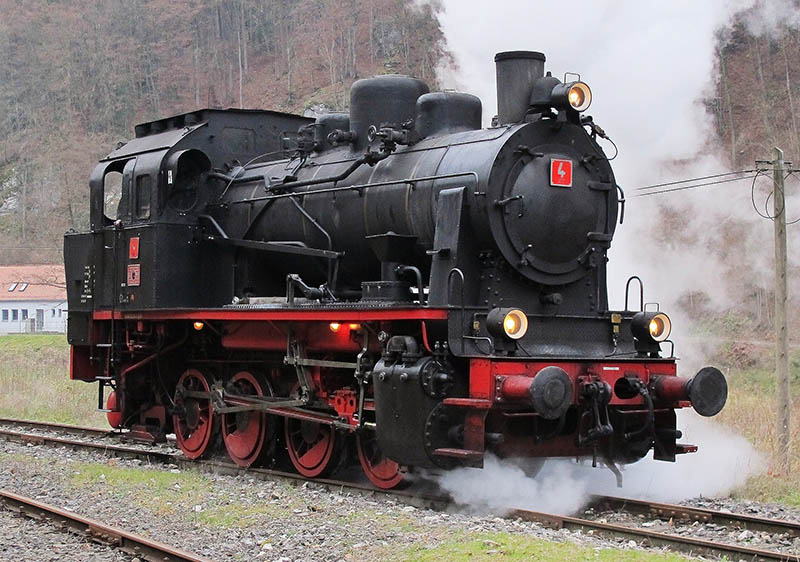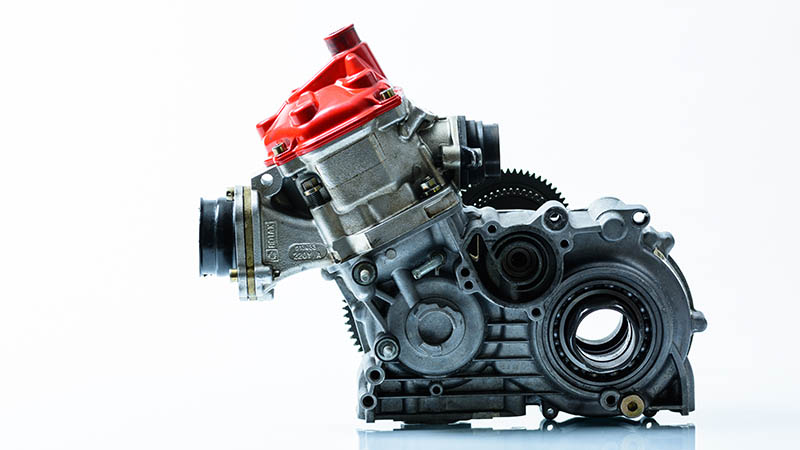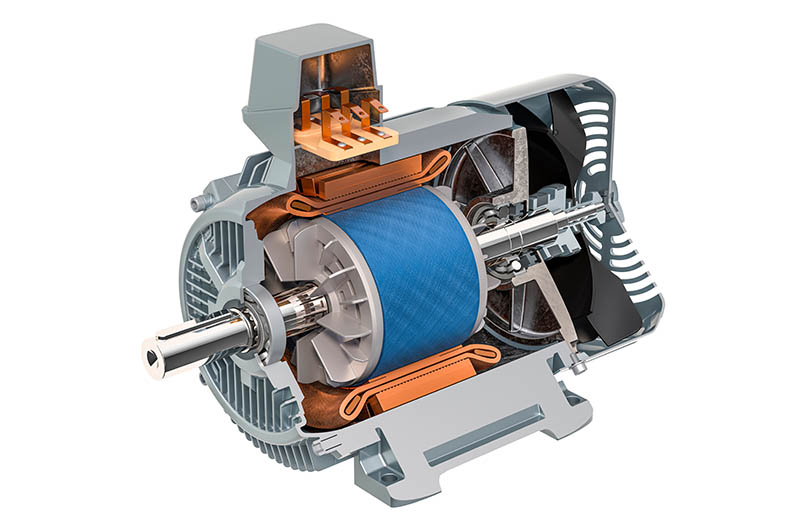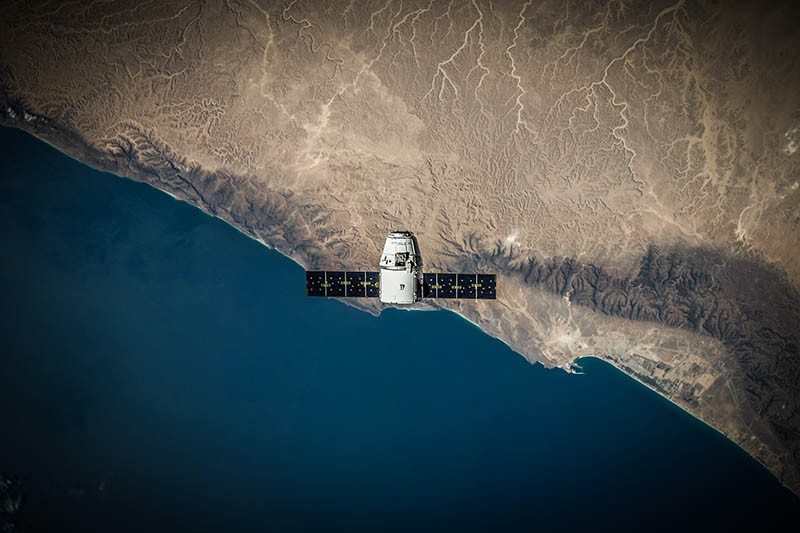8 Types of Motors (With Pictures)
-
Pete Ortiz
- Last updated:

Most people know about the types of engines that power cars and lawnmowers. Those engines are thermal internal combustion engines. They are super common, and many people can even build them, rebuild them, fix them, and replace them themselves. But internal combustion engines are just one type of motor used in applications around the world. There are actually seven additional types of motors with dozens of configurations, variants, and prototypes used to power everything from satellites to steam locomotives to rocket ships.
Here are eight types of motors you should know about.
The 8 Types of Motors
1. Internal Combustion Engine

Internal combustion engines are one of the most common engines in the world. They are a type of thermal engine, meaning they produce and use heat during their operation. When people think of a motor, they are usually thinking of an internal combustion engine. Internal combustion engines come in all shapes and sizes. They include small two-stroke engines that power lawn mowers to massive diesel monsters that power locomotives and container ships.
How Does It Work?
An internal combustion engine creates work by burning fuel inside a reinforced combustion chamber. In an internal combustion engine, the combustion chamber is located inside the engine, hence the name. The combustion produces energy and byproducts, which expand. The additional volume and exhaust fill the engine and push the pistons to produce power. Different types of internal combustion engines are determined by what kind of fuel they use and by how many steps (strokes) the engine uses to harness the combustion process.
Examples
Two-Stroke
A two-stroke engine is a simple machine that powers everything from leaf blowers to lawn mowers and pressure washers. They have a more straightforward mechanism than a four-stroke engine and produce a lot less power. Two-stroke engines often run on gasoline or a gasoline oil mixture.
Four-Stroke
Four-stroke engines are the type of motor that powers automobiles, trains, helicopters, and container ships. These engines can be much larger than two-strokes, and they produce a lot more power. The largest four-stroke engines can produce more than 100,000 horsepower and propel ships across vast distances. Four-stroke engines can be powered by gasoline or diesel fuel.
2. External Combustion Engine

External combustion engines are another type of thermal engine. External combustion predated internal combustion and was one of the first types of engines ever to be mass-produced. Instead of keeping the combustion and exhaust inside the engine together, the external combustion engine keeps the fuel separate. The separate fuel source is the hallmark of an external combustion engine.
How Does It Work?
External combustion engines generally work by transferring heat from the fuel source to a liquid. The liquid then either expands or changes state (steam), and this change is used to produce work. An external fuel source (wood, coal, charcoal) is heated outside of the engine, and then the heat is transferred to a liquid either through a tube or wall. The liquid then heats up and works to move the motor.
Examples
Steam Engine
The most universally recognized example of an external combustion engine is the steam engine. Imagine an old steam locomotive. The coal that powered early steam engines was shoveled into a firebox (external chamber) which produced a ton of heat that was used to turn water into steam to power the motor. Steam engines were used in all manner of ways and made up the backbone of the Industrial Revolution.
3. Reaction Engine

Reaction engines use simple Newtonian physics to create motion. Unlike other types of motors, reaction engines are primarily used to produce thrust for motion. Other motors are used to create electricity spin or torque. Reaction engines are designed to move things at high speeds. The name comes from Newton’s laws which say that every action has an equal and opposite reaction. It is this property that reaction engines are based upon. The colloquial name of a reaction engine is a jet engine.
How Does It Work?
Reaction engines work by heating gas and pushing the hot gas through a small space. The force of the expanding gas being forced out of a specially designed opening creates an equal amount of thrust in the opposite direction. Using highly energetic fuels (rocket fuel, jet fuel), these engines can rapidly create a ton of hot gas that is transferred directly into massive amounts of thrust. If you’ve ever seen one of those close-ups of a fighter jet’s engine nozzle adjusting as a blast of blue flame comes out, you’ve seen a reaction engine at work.
Examples
Turbojet
Turbojet engines power some of the largest commercial airliners in the world. Turbojets work by drawing in oxygen and compressing it using large turbines (the part you see at the front of the engines that spin on the plane) and then expelling a vastly expanded and heated gas out the back, producing thrust. If you’ve ever flown on a plane, you have experienced the power and usefulness of a turbojet engine.
Rocket Booster
Rocket boosters are also a form of reaction engine. Instead of having spinning turbines at the front like a plane, all of the thrust is forced downwards in one giant blast that pushes massive rockets upwards. These engines are the type that brought men to the moon. A rocket booster is perhaps the simplest form of reaction engine to understand. A massive amount of force is directed downwards, and the reactive force then propels the rest of the rocket upwards.
4. Electrical Engine

Electrical engines utilize electricity and magnetism to create work or power without the use of any sort of combustion. Instead of burning fuel, electrical engines use the physical properties of magnetism to create work. There are three types of electric engines magnetic, piezoelectric, and electrostatic, of which magnetic engines are the most common.
How Does It Work?
An electric engine requires three components to work, electricity, magnets, and a conductor. Electricity is sent through the conductor, which creates an electric field that interacts with the magnets to create motion. Electric engines differ from combustion engines because they need to have electricity created and added to the engine from an outside source. In contrast, combustion engines have everything they need to create fuel, power, and motion in one place. Seeing an electrical engine work is fascinating. Look up the Duracell motor for an example. It uses a single AA battery and some copper wiring to create motion.
Examples
Electrical engines, also known as electric motors, are used to power all sorts of things. Electric generators work with the same principles used by electric motors to create motion. Instead of creating motion, they create electricity using a combustion engine. Electric engines are used to power everything from electric vehicles to your dryers.
5. Ion Drive

Ion drives sound like something out of science fiction, but they are real, and they are becoming more advanced all of the time. Organizations like NASA and SpaceX, as well as nations like China, are developing ion drives for space travel and exploration. Ion drives are one of the newest forms of motor to be invented and used by humans.
How Does It Work?
Ion drives work by using electricity to charge atoms to create ions. These ions are then forced outwards as a plasma to create thrust. The kicker is that ion engines cannot work in any atmosphere. If there are already charged atoms and ions around the engine, the ions will not produce any thrust. That means ion drives can only be utilized in the vacuum of space. But that is exactly where they are being used and tested today.
Examples
Satellites and space stations are equipped with small ion drives to help them move in orbit. Satellites sometimes need to move to readjust course or to avoid space debris. Ion engines are powered by small batteries and produce enough thrust to move small objects in space. Starlink satellites and the upcoming Tiangong space station are current examples of things that are using ion drives.
6. Physical Engine

Physical engines are the oldest type of motor in use. They work on the principle of potential energy. Energy is stored using things like pneumatics, hydraulics, and tension. This stored energy is potential energy that can be unleashed to make a motor move. Physical engines are named so because they use purely physical forces to create work rather than relying on things like electricity, combustion, or ionization.
How Does It Work?
Physical engines take potential energy, store it and then release it at a given time. Compressed air can be used as a physical engine. The potential energy is stored in a tank, and then the air is released through a valve. The only forces at work are physical movements between two different pressures. Springs are also a form of physical motor. Springs can be compressed or wound to store energy and locked, and then when you release the tension in the spring, it shoots outwards and creates motion. These are all examples of physical motors.
The problem with physical motors is that they require a constant source of potential energy. They are usually bulky, clunky, old, and inefficient. Springs need to be wound by hand. Pneumatic engines need a constant stream of compressed air. These shortcomings make it, so physical engines are no longer very common.
Examples
Catapults
Catapults are one of the earliest forms of a physical engine that was mass-produced. The catapults worked by storing potential energy in ropes and counterweights. When the energy was released, it caused the catapult to move and spin. That motion was then harvested to fling projectiles at enemies.
Old Clocks
If you have ever had to wind a cuckoo clock or grandfather clock or wristwatch you have primed a physical motor. Winding a clock motor puts energy into the internal mechanisms, which is then slowly released to keep the second hand moving. No batteries, electricity, or solar power is needed.
7. AC Electric Motors

AC stands for alternating current. AC electric motors use a moving system of magnets, stators, and rotors to create motion. AC electric motors are considered a type of electric engine. AC electric motors are silent, flexible, and versatile and can be used in a variety of applications. AC motors are extremely common but less understood than DC motors which use an external power source, like a battery, to operate.
How Does It Work?
A magnetic field interacts with wound coils. The coils are usually copper since copper is one of the best conductors on Earth. The copper wire is wrapped around an output shaft which is designed to move when it interacts with the magnets. The motion created is what powers an AC motor.
Examples
One of the most common uses for AC electric motors is in commercial pumps. The motion needed for a pumping action is well suited for AC motors. Pumps are simple machines used all over the world which makes AC motors very common. AC motors are used in well pumps, sump pumps, water heaters, and general household appliances.
8. DC Electric Motors

DC stands for direct current, and it is a competitor to AC power. Direct current electric motors take electricity from a separate external source rather than generating it on their own. The external electricity is used to create motion instead of the magnetic forces used in an AC motor. The most common external source for DC motors is a battery or an outlet. The electricity is provided at a constant rate to a DC motor rather than being generated by magnetic fields as in an AC motor.
How Does It Work?
DC motors take direct power from a battery or outlet. The power is distributed at a constant rate and voltage. The electricity then interacts with a series of moving magnets to create motion. The magnets can be adjusted to increase speed, torque, or direction. The two primary types of DC motors are brushed and brushless. You have probably seen these terms on the box of modern tools. Brushless motors control the electricity with a series of magnetized brushes. These are the oldest types of DC motor. Brushless motors are newer and more efficient and simply use flat magnets instead of brushes to control the direct current.
Examples
DC electric motors are used in all sorts of applications today. Battery power is becoming all the rage for many different applications. Electric drills and saws use DC motors to operate. Electric vehicles also use large DC motors to run. There are even electric chainsaws, electric leaf blowers, and electric lawnmowers. All of these moving parts are powered by DC electric motors. The DC motors in electric vehicles are powered by massive rechargeable lithium-ion batteries.
Engines vs. Motors
The words engine and motor are used interchangeably. Colloquially, there is no difference between an engine and a motor. In engineering circles and professional realms, there is a big difference. Technically, an engine is, by definition, powered by combustion. A motor, on the other hand, is powered by electricity. Anything powered by fossil fuels, like internal combustion engines or reaction engines, are, well, engines. Anything powered by batteries, like a drill or a Tesla, uses motors.
Motors and engines work in concert to power our modern world. Some motors get their electricity from engines. Some engines work in tandem with motors in order to function properly. For example, a car has a battery and an alternator in addition to a combustion engine. You might charge your batteries from an outlet where the power is created using combustive methods, but that combustion creates electricity that you are now using to power a motor. It is easy to see why people can get confused.
Despite the differences in definition, most people simply use one term for another, and in most cases, that is fine. Just don’t tell an engineer.
Conclusion
There is a lot more to the world of engines than the four-stroke internal combustion engine. There are old motors like external combustion engines and wind-up clocks. There are also brand-new motors like ion drives and DC electric motors that are being used to propel humanity into the future. These families of motors and engines of all shapes, sizes, and designs power our modern world and make our lives today possible.
Featured Image Credit: anaterate, Pixabay
Contents


